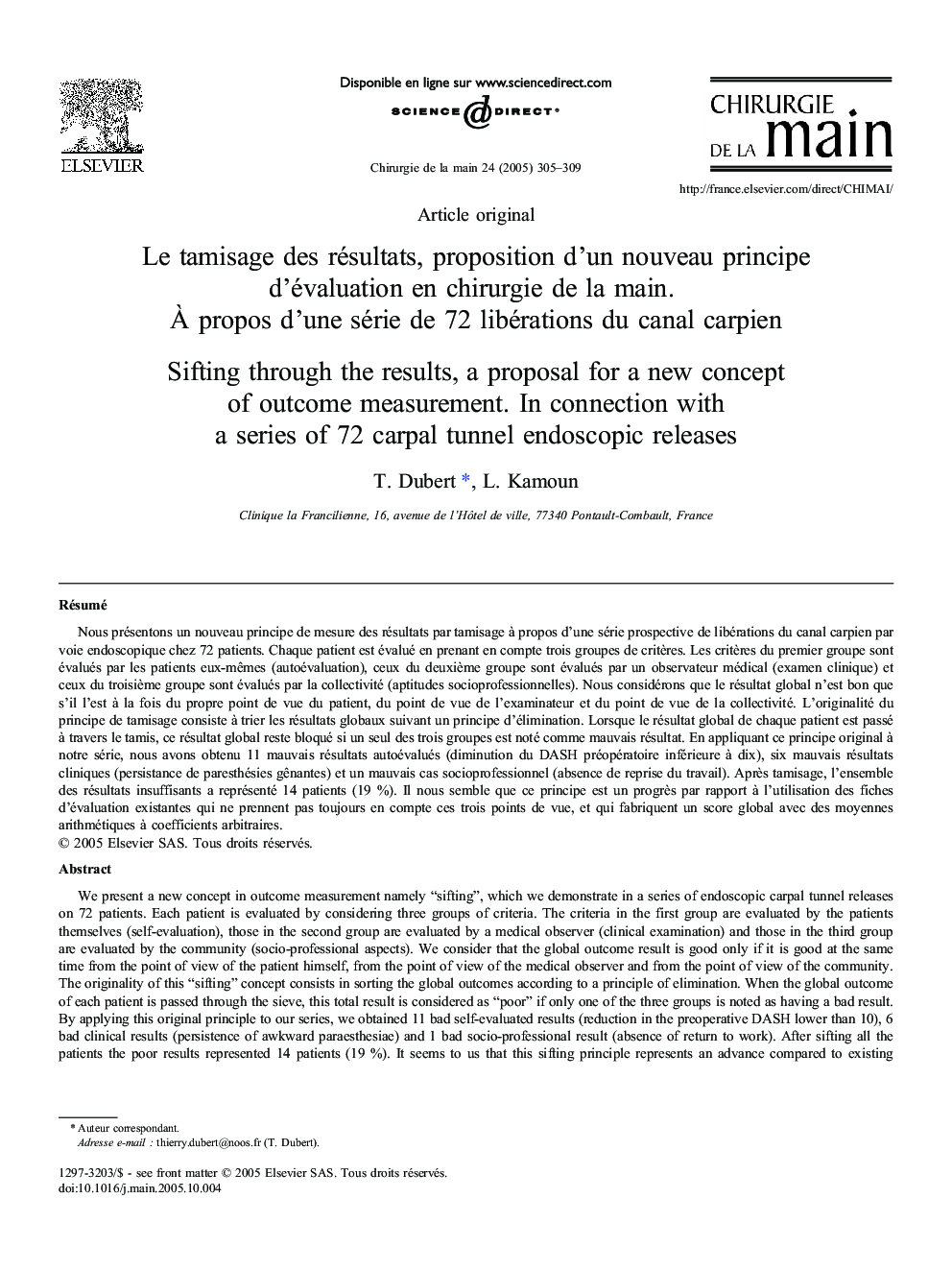| Article ID | Journal | Published Year | Pages | File Type |
|---|---|---|---|---|
| 9350039 | Chirurgie de la Main | 2005 | 5 Pages |
Abstract
We present a new concept in outcome measurement namely “sifting”, which we demonstrate in a series of endoscopic carpal tunnel releases on 72 patients. Each patient is evaluated by considering three groups of criteria. The criteria in the first group are evaluated by the patients themselves (self-evaluation), those in the second group are evaluated by a medical observer (clinical examination) and those in the third group are evaluated by the community (socio-professional aspects). We consider that the global outcome result is good only if it is good at the same time from the point of view of the patient himself, from the point of view of the medical observer and from the point of view of the community. The originality of this “sifting” concept consists in sorting the global outcomes according to a principle of elimination. When the global outcome of each patient is passed through the sieve, this total result is considered as “poor” if only one of the three groups is noted as having a bad result. By applying this original principle to our series, we obtained 11 bad self-evaluated results (reduction in the preoperative DASH lower than 10), 6 bad clinical results (persistence of awkward paraesthesiae) and 1 bad socio-professional result (absence of return to work). After sifting all the patients the poor results represented 14 patients (19Â %). It seems to us that this sifting principle represents an advance compared to existing evaluation forms, which do not independently consider these three points of view, and which provide a total score by means of arithmetic operations with arbitrary coefficients.
Related Topics
Health Sciences
Medicine and Dentistry
Orthopedics, Sports Medicine and Rehabilitation
Authors
T. Dubert, L. Kamoun,
